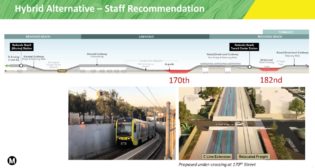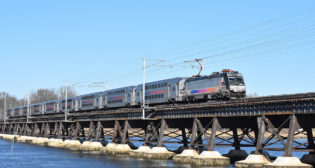
Unveiled and Approved: Project Connect’s First Phase Alignment (UPDATED June 7)
Written by Marybeth Luczak, Executive Editor
Rendering of a new light rail bridge crossing Lady Bird Lake. (Austin Transit Partnership)
The Austin Transit Partnership (ATP) on May 23 recommended a 9.8-mile, 15-station light rail alignment as the first phase of Project Connect, based on the expertise of partners ATP, the city of Austin, Tex., and CapMetro as well as community input. On June 6, Austin city leaders approved it.
The recommendation of the 38th Street to Oltorf to Yellow Jacket alignment (below) was one of five scaled-back options considered during six weeks of community engagement, which wrapped up May 2, according to ATP, the independent entity formed by the city of Austin and CapMetro to handle financing, design and construction of Project Connect, a more than $7 billion new light rail and expanded bus system project that Austin voted in November 2020 to implement.
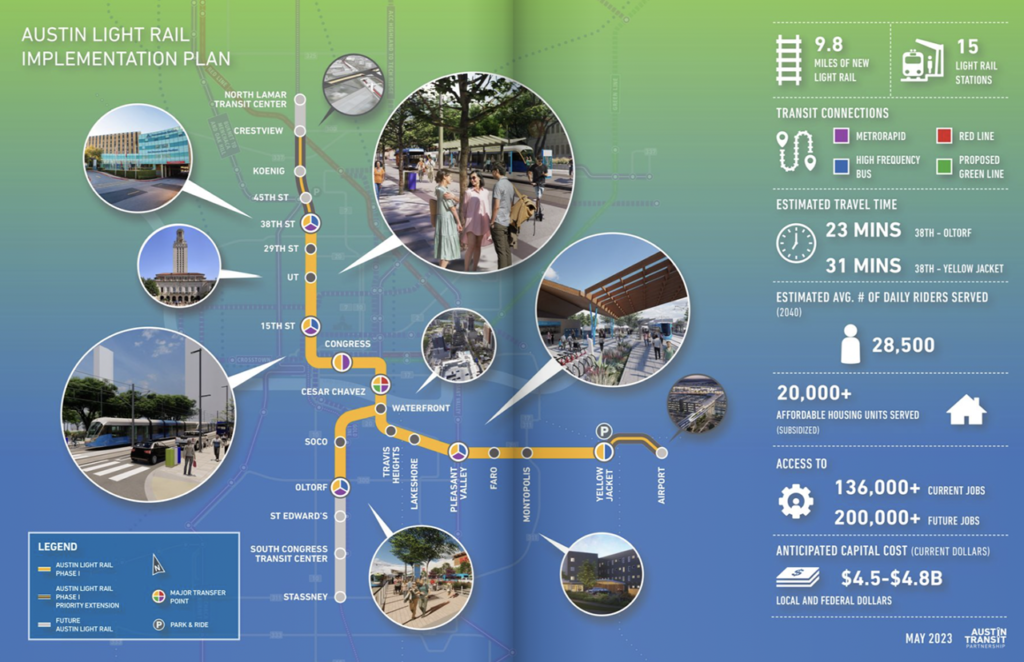
The recommendation, released in ATP’s Austin Light Rail Implementation Plan, was approved June 6 in a final vote taken by the Austin City Council, the Capital Metro Board and ATP, and “sets in motion the next phase of the plan, which includes the design work and initiates the funding process,” according to a June 6 report from KUT Public Media, Austin’s NPR station. “City Council and the CapMetro board both separately approved the plan last week. This is the final and cumulative vote from all three boards of directors.”
During the public engagement period for the plan, ATP said it interacted with more than 8,000 community members through 90 in-person and virtual events, and their feedback showed support “for the advancement of a light rail project that prioritizes ridership, connectivity, and access to opportunities and also maximizes coverage and seamless integration into other transportation systems” (download engagement report below).
The 38th Street to Oltorf to Yellow Jacket alignment—an on-street, two-line light rail project that will cross Lady Bird Lake at Trinity Street (see map below)—is estimated to cost between $4.5 billion and $4.8 billion, and “lays the best foundation for future expansions and extensions,” ATP Executive Director Greg Canally said.
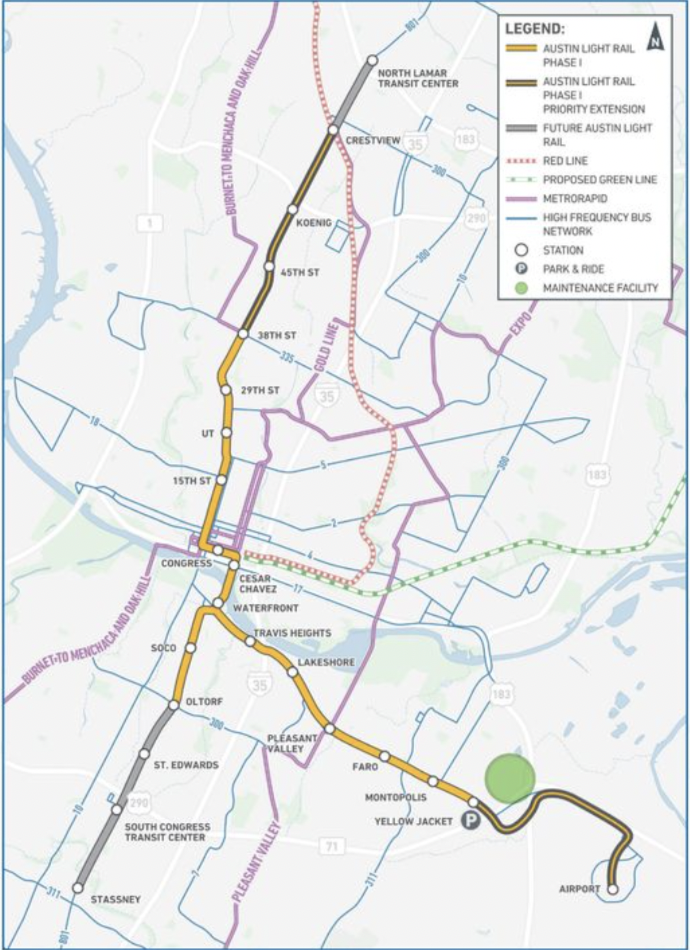
Additionally, it is the “most balanced option between North, East and South Austin, and will give the opportunity to connect historically underserved communities to the East, high ridership stations to the South, and also connect highest ridership stations North of the river including the UT and Downtown Austin areas,” according to ATP.
This option will link with existing Red Line and future Green Line commuter rail at the Downtown Station; with current and future MetroRapid bus service, including Pleasant Valley and downtown; and with key high ridership and high frequency bus routes.
The project is slated for evaluation by the Federal Transit Administration (FTA) for funding under its Capital Investment Grant (CIG) program, according to ATP, which will seek approximately 50% of project capital costs. “Upon adoption of the Austin Light Rail Implementation Plan, ATP will progress through a multi-year process of continuing project development, environmental review and coordination with FTA on federal grant funding,” ATP reported.
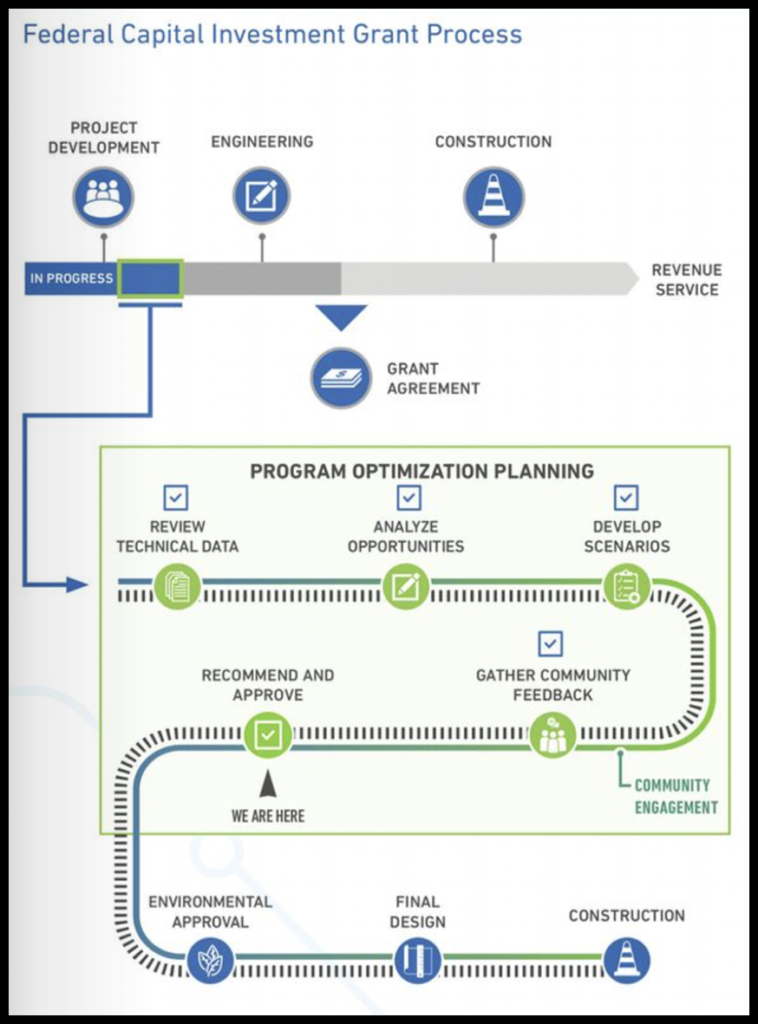
According to ATP, a top theme from across the community was access to the airport; as such, the Yellow Jacket to the Airport alignment was identified as the priority extension, along with 38th Street to Crestview alignment. “These extensions could be accelerated if funding becomes available,” ATP said.
According to KXAN, an NBC affiliate in Austin, ATP’s first-phase “recommendation comes nearly 11 months after ATP leaders pressed pause on light rail designs, citing shifting scope changes, increasingly expensive real estate costs and construction fees skyrocketing.
“Most recently, the project has been subject to state-level weigh-in, including an opinion released by Texas Attorney General Ken Paxton on Project Connect’s funding [—that the financing model may be illegal under state law—], as well as two Project Connect funding-related bills making their way through the Texas Legislature.”
On May 22, House Bill 3899, named the No Blank Checks Act, “passed the Senate 29-1, which requires Austin to get voter approval before issuing debt to build the light rail,” the Austin-American Statesman reported. According to the June 6 KUT Public Media report, that bill has died.
“We’re thrilled that we have been approved to move forward with this project, and continue with transforming the mobility landscape in Austin,” said Greg Canally on June 6. “ATP has been community-minded throughout this entire process, and we thank both city of Austin and CapMetro for approving the recommendation and in doing so, validating the feedback from our community. This is a big win for Austin, and now that we have been given the green light, we are jumping into the important work to make this vision a reality.”
